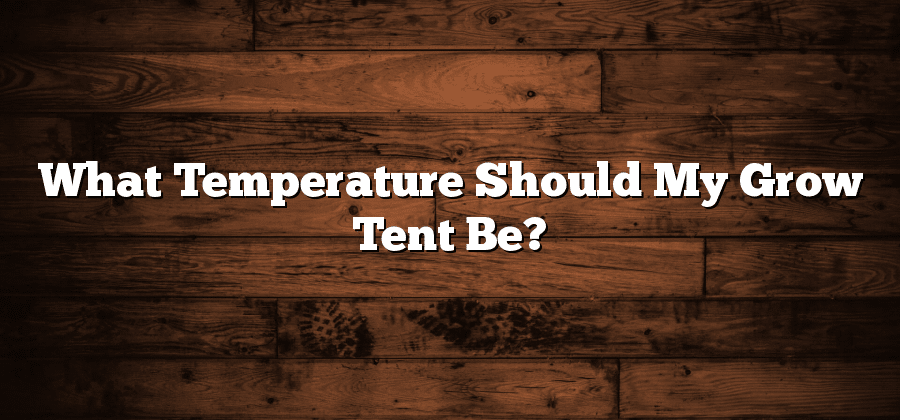Factors Affecting Grow Tent Temperature
Factors affecting the temperature inside a grow tent can play a significant role in the success or failure of any indoor gardening endeavor. One primary factor that can influence the temperature is the heat generated by the grow lights. Different types of grow lights emit varying amounts of heat, and the proximity of the lights to the plants can also impact temperature levels. Additionally, the positioning and number of fans or ventilation systems can either trap or expel heat, consequently affecting the overall temperature inside the grow tent.
Another factor to consider is the ambient temperature of the room or area where the grow tent is located. If the room experiences extreme temperatures, such as during excessively hot or cold seasons, it can directly affect the temperature inside the grow tent. This is particularly crucial for plants that have specific temperature requirements for optimal growth. Therefore, controlling the ambient temperature of the surrounding area is essential in maintaining a consistent and favorable temperature range inside the grow tent.
Understanding Optimal Temperature for Plant Growth
Plants, like all living organisms, have specific temperature requirements for optimal growth and development. Understanding these temperature requirements is crucial for successful cultivation in grow tents or indoor gardening setups.
Different plant species have varying ideal temperature ranges for growth. While some plants thrive in cooler temperatures, others prefer a warmer environment. Generally, most plants grow best within a range of 65-75°F (18-24°C). However, it is essential to research the specific temperature preferences for the plants you intend to grow as some may have more specific requirements. Achieving and maintaining the optimal temperature range is crucial for ensuring healthy plant growth, as well as proper flowering and fruiting.
Importance of Maintaining Consistent Temperature Levels
In the world of plant cultivation, maintaining consistent temperature levels is an essential aspect that must not be overlooked. Temperature plays a crucial role in the growth and development of plants, impacting their overall health and productivity. When it comes to grow tents, where plants are nurtured in controlled environments, temperature regulation becomes even more critical.
Consistency in temperature ensures that plants receive the optimal conditions for their growth and maximize their potential. Fluctuations in temperature can lead to a range of issues, such as stunted growth, reduced fruiting, and even plant stress. By maintaining a stable temperature within the grow tent, growers can create an environment that fosters healthy plant growth, higher yields, and overall success in their cultivation endeavors.
The Role of Temperature in Photosynthesis
The temperature within a grow tent plays a crucial role in the process of photosynthesis. Photosynthesis, the primary method through which plants convert sunlight into energy, requires specific temperature conditions to occur optimally. This process involves two key reactions: the light-dependent reaction and the light-independent reaction, also known as the Calvin cycle.
During the light-dependent reaction, light energy is absorbed by chlorophyll in the plant’s leaves, initiating the production of adenosine triphosphate (ATP) and reducing power in the form of NADPH. This critical step relies on the temperature being within a suitable range. If the temperature is too low, the reaction slows down, and less ATP and NADPH are produced, limiting the overall efficiency of photosynthesis. On the other hand, if the temperature is too high, the reaction can become too fast, causing damage to the plant’s cellular structures and reducing the availability of carbon dioxide, another essential component for photosynthesis.
Common Temperature Issues in Grow Tents
One of the common temperature issues that growers face in grow tents is overheating. Excessive heat can significantly impact plant growth and can even lead to irreversible damage. This issue often arises when the grow tent is located in a space with poor air circulation or when the lighting system emits excessive heat. To combat overheating, growers can employ various strategies, such as using exhaust fans to enhance airflow, utilizing reflective materials to prevent heat absorption, and selecting LED lights that emit less heat compared to traditional lighting systems.
On the other hand, another common temperature issue in grow tents is temperature fluctuations. Fluctuating temperatures can result from external factors like changes in ambient temperature, improper ventilation, or inconsistent use of heating or cooling devices. These fluctuations can be problematic for plants as they require stable and consistent temperatures for optimal growth. Growers can address this issue by installing a thermostat or temperature controller to maintain a steady temperature within the grow tent. Additionally, ensuring proper insulation and sealing any openings in the tent can also help minimize temperature fluctuations. Overall, it is crucial for growers to identify and address these common temperature issues in grow tents to create an ideal environment for plant cultivation.






